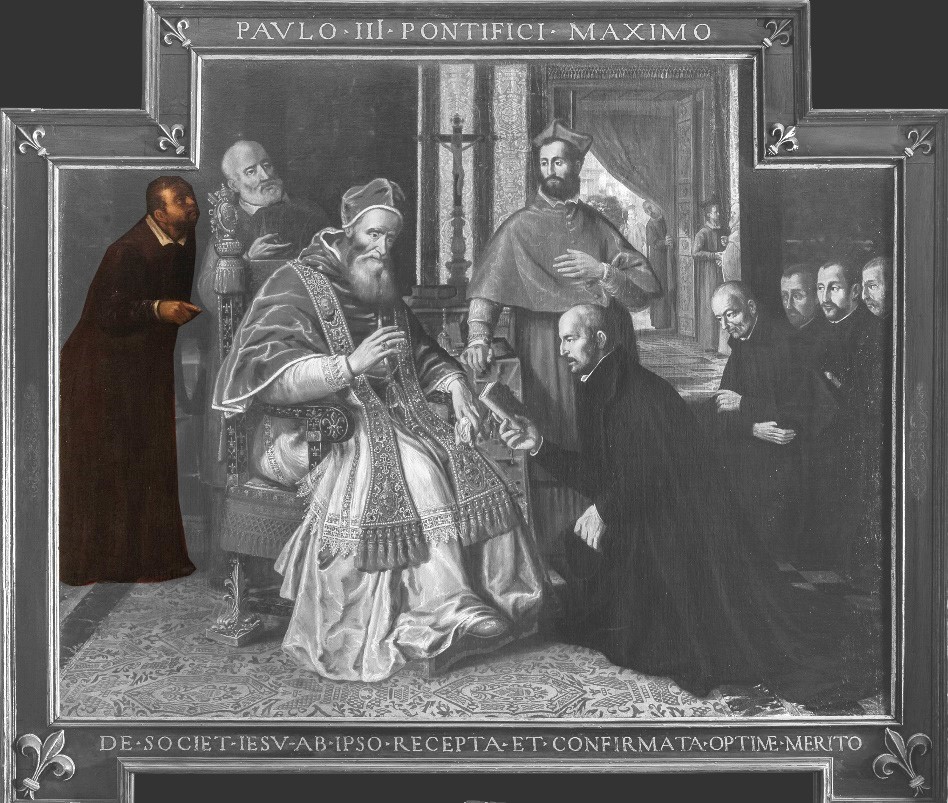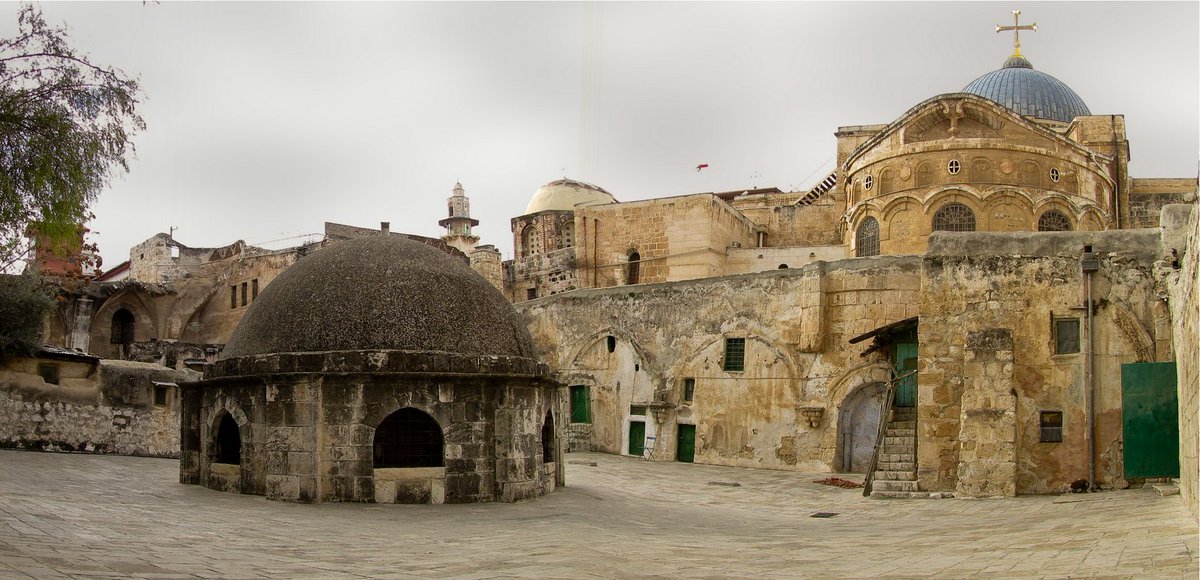
🧵1: 𝗔𝗻 #𝗘𝘁𝗵𝗶𝗼𝗽𝗶𝗮𝗻 𝗦𝗰𝗵𝗼𝗹𝗮𝗿 𝗶𝗻 𝗧𝗿𝗶𝗱𝗲𝗻𝘁𝗶𝗻𝗲 𝗥𝗼𝗺𝗲: 𝗧𝗮̈𝘀𝗳𝗮 𝗦̣𝗲𝘆𝗼𝗻 𝗮𝗻𝗱 𝘁𝗵𝗲 𝗕𝗶𝗿𝘁𝗵 𝗼𝗳 #𝗢𝗿𝗶𝗲𝗻𝘁𝗮𝗹𝗶𝘀𝗺
This thread is based on the article @delorenzibot and I wrote for @Journal_Iti @CambridgeUP
cambridge.org/core/journals/…
This thread is based on the article @delorenzibot and I wrote for @Journal_Iti @CambridgeUP
cambridge.org/core/journals/…

2: 𝘢𝘣𝘣𝘢 Täsfa Ṣeyon (ተስፋ ጽዮን, 1510–1553), aka Pietro Abissino and Pietro Indiano, was an Ethiopian monk hailing from #Däbrä Libanos, a leading monastery in #Shäwa. He served at Emperor Lebnä Dengel’s court, possibly as a scribe or historian. 

3: 𝘢𝘣𝘣𝘢 Täsfa Ṣeyon left Ethiopia during the invasion by the Sultanate of Adal, which devastated Däbrä Libanos and its community. 



4: He went to Jerusalem, where he probably stayed at the Ethiopian monastery Dayr al-Sultan, and from there to Rome, where he reached the Church of Santo Stefano. 

5: Situated behind Saint Peter’s Basilica, Santo Stefano had long been associated with the Ethiopian diaspora. To Italians, it was known as Santo Stefano dei Mori, degli Indiani, and degli Abissini. To Ethiopians, it was Däbrä Qeddus Esṭifanos, or the Mount of Saint Stephen. 

6: By the 1530s, SS was the most famous community of free Africans in Europe. Leo Africanus referred to it in his Descrittione dell’Africa (1550), describing “certain religious who are friars and have their faces branded; they can be seen throughout Europe but especially in Rome” 

7: Over the next two decades, TS became not only the most prominent resident of SS, but also an important advisor to Pope Paul III and a member of the papal household, which financed his living expenses and Latin lessons. 

8: In this same period, S. Stefano became an institutional source of European knowledge about Ethiopia and Eastern Christianity, where the curious could learn about Ethiopian culture, languages, and religious beliefs. TS exemplified this development. 

9: For example, shortly after arriving in Rome, TS was asked to assess the outrageous claims of the Portuguese conman João Bermudes, who had just returned from Ethiopia claiming to be the appointed head of the Ethiopian Orthodox Church. 

10: The scholar Ludovico Beccadelli also consulted TS to clarify and correct claims made by Francisco Álvares in his Verdadeira informação das terras do Preste João das Indias. Beccadelli explained he had “confirmed it with our good Ethiopian, brother Pietro”. 



11: TS was the principal informant of Paolo Giovio, who included a detailed discussion of Ethiopia in his Historiarum sui temporis (1550). He referred to TS as “Pietro Abissino, man of illustrious and honorable ingenuity”. 



12: Täsfa Ṣeyon spoke so well of his native Shäwa that Giovio naively claimed Shäwans “preceded all Abyssinians in astuteness, ingenuity, sobriety, customs and good-living,” and “rule no different than Venetian gentlemen”! 

13: In the 1540s, Täsfa Ṣeyon also edited and wrote the foundational volumes of the #Ethiopianistlibrary, a significant component of early modern #orientalism and a key expression of #CatholicOrientalism.
14: The first volume of the #EthiopianistLibrary was the Ethiopian Psalter (1513), produced by Johannes Potken of Cologne and Tomas Wäldä Samu’él of SS, via Jerusalem. 

15: Täsfa Ṣeyon took Ethiopian-European collaboration to new heights. In 1548-9 he edited the #editioprinceps of the Ethiopian New Testament. 



16: Täsfa Ṣeyon also printed Latin translations of the Ethiopian mass and the Ethiopian baptism rituals. 



17: Finally, he helped with the first printed Ge’ez grammar, published by his student Mariano Vittori in 1552 (reprinted in 1630). Vittori wrote, “Peter the Ethiopian, a very pleasant and extremely humane man, very well-versed in his language…with greatest benevolence taught us” 



18: The chief sponsor of these projects was Marcello Cervini (later Pope Marcellus II), Cardinal Protector of @bav, whose interest in Ethiopian Christianity stemmed from the ongoing #CouncilofTrent and #CounterReformation. 

19: TS’s seminal contributions to Ethiopian studies remain underappreciated. Consider that the entry “Ethiopian Studies” in the Encyclopaedia Aethiopica ignores him and his collaborators, and claims that Hiob Ludolf “was the first orientalist to write scholarly on Ethiopia”😡 

20: Ludolf is a towering figure in ES, but he was neither the first orientalist interested in Ethiopia nor the founder of ES. The field emerged in Rome from the work of TS and his Italian and Ethiopian collaborators, among them abba Yohannes, the first Ethiopian Catholic Bishop. 

21: Keller and Irigoyen-García call these formative, complex, and frequently unequal intellectual relationships “the dialectic of orientalism.” TS was an accomplished and pioneering multilingual scholar, not an informant. books.google.ae/books?id=Uu09D…
22: In 1924, Crown Prince Täfäri Mäkonnen (the future emperor Haylä Sellasé) visited Rome on a European tour. He stopped at SS, where he was joyously received by its erudite Eritrean and Ethiopian residents. He and his companions then visited the epitaph of TS. 

23: According to the brilliant Heruy Wäldä Sellasé, who witnessed the visit, SS and its residents were “a reason for great pride to all the children of Ethiopia.” He included the epitaph in his book about the tour, which may be the first mention of TS in Amharic literature. 



24: By the 1930s, some Italian writers tried to co-opt Täsfa Ṣeyon and S. Stefano as symbols of the longevity of Italo-Ethiopian relations, using early modern history to justify the fascist colonial project on the international stage. 



25: In an echo of this earlier colonial Eurocentrism, the Vatican later made SS and its successor the Pontifical Ethiopian College into symbols of ecumenicalism, African Catholicism, and Italo-Ethiopian fraternity. 

27: We want to thank @Aps and @aus for funding our project, and @Journal_Iti for publishing our work.
Thank you for reading and retweeting!
@delorenzibot
@SalvadoreMatteo
cambridge.org/core/journals/…
Thank you for reading and retweeting!
@delorenzibot
@SalvadoreMatteo
cambridge.org/core/journals/…

I should mention that the article is *open access* thanks to @AUSharjah
• • •
Missing some Tweet in this thread? You can try to
force a refresh







